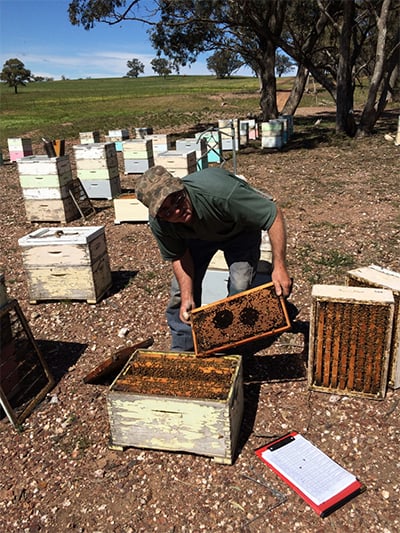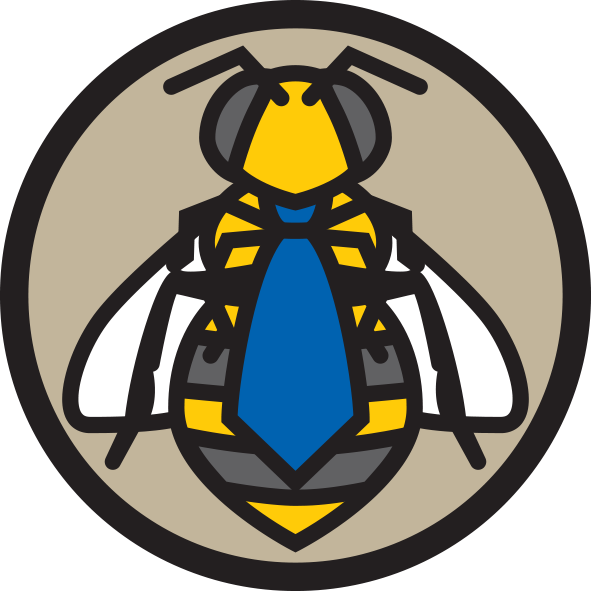An AgriFutures Australia project by Robert Banks and Vinzent Boerner of the Animal Genetics and Breeding Unit, a joint venture between NSW Department of Primary Industries and the University of New England, investigated the utilisation of genetic evaluation in Australian honey bees. These methods are applied to most livestock and many plant industries world-wide. Genetic selection methods have now been used in honey bees in numerous countries throughout the world.

A grid can be used to estimate the area of brood or pollen
Genetic evaluation relies on the collection of performance and pedigree data.
Performance can be measured in numerous ways: honey production, population strength, disease, gentleness, hygienic behaviour, swarming frequency and royal jelly production, as examples.
Pedigree can be measured based on records, but is best measured using genetic markers. This is because the daughters of a queen vary in relatedness. Some will be full sisters, sharing 75% of their genes, while the others will be only half-sisters sharing only 25% of their genes. The use of genetic markers to determine these relationships accurately and efficiently is the benefit of genetic evaluation tools. This increases the power of genetic evaluation, saving time and costs in breeding programs.

Joe Horner checking a brood frame which has been tested for the hygienic behaviour trait.
The success of a genetic improvement program depends on the heritability of the traits – that is, the proportion of difference in performance that is due to genetics, rather than non-genetic factors such as season or location.
Genetic improvement programs use BLUP (Best Linear Unbiased Prediction) analysis to take performance, pedigree and other factors such as year or apiary data and assign Estimated Breeding Values (EBVs) to queens. An EBV describes a queen’s genetic merit for a particular trait. For example, a queen with an EBV of +5kg for honey has genes that are worth an extra 5kg of honey per hive compared to the average queen, while a queen with an EBV of 0.37 for brood viability performs 37% better than the average queen for this trait.
The study examined the ability to apply BLUP analysis in two beekeeping operations, those of Joe Horner and Lindsay Bourke. The study found that implementing a genetic improvement program in Australia is feasible. Further, doing so would generate gains of $41million over a 25-year period in honey production alone.
The report identified an imbalance between costs and benefits as a hindrance to breeding better bees. In most livestock industries the breeding sector bears the implementation costs, but only obtains a small share of the total benefits. This means that breeders are constrained by the amount of investment (time) that they can put into recording traits for selection. Such constraints are often tackled with collective investment, whereby the industry supports the development of the breeding program.
Video:
Breeding queen bees, Agrifutures Australia
Acknowledgements:
- G. Banks & V. Boerner (2015) Genetic evaluation of Australian honey bees using BLUP procedures. Rural Industries Research and Development Corporation Publication 15/104, Canberra ACT
- This article was written by Nadine Chapman and peer-reviewed by Liz Frost, Corinne Jordan and Annelies McGaw, Agrifutures Australia.

